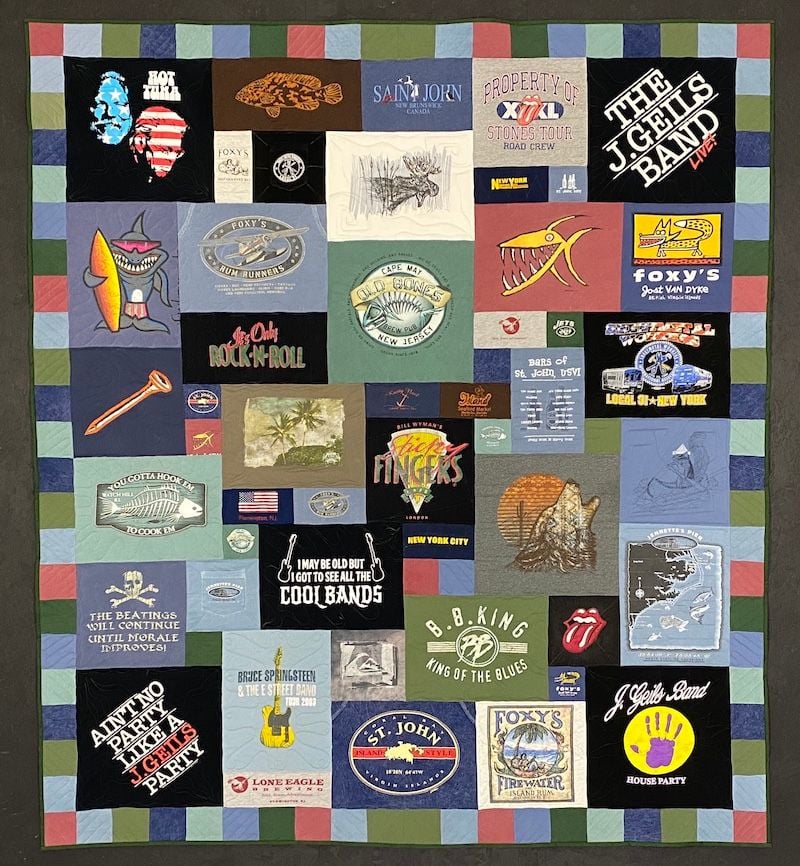
Successful T-shirt Quilts Solve These 3 Problems:
- All graphics and logos on a T-shirt need to be used in their entirety.
- A T-shirt quilt must attract and keep a viewer’s attention.
- The different color T-shirt blocks need to be balanced throughout the quilt.
There are many styles of T-shirt quilts. Some styles are very traditional while others are much more modern. The question to ask about any solution is, does it solve all the challenges inherent to all T-shirt quilts?
Here is a look at the three problems that have to be solved in order to consider a T-shirt quilt successful.
Problem 1 – All Graphics and Logos Need to be Used in Their Entirety
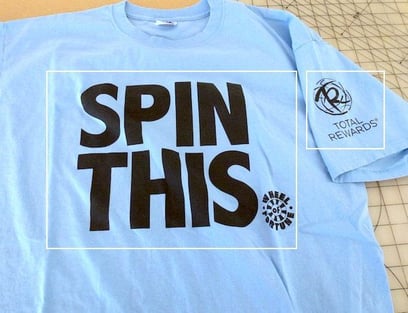 Think about your own T-shirts. Do you have some shirts with large designs and other designs that are small? This is not just from one T-shirt to another. Many T-shirts will have a small design on the front and a large design on the back. Don't forget those T-shirts or sweatpants that have a graphic that runs vertically down the arm or leg.
Think about your own T-shirts. Do you have some shirts with large designs and other designs that are small? This is not just from one T-shirt to another. Many T-shirts will have a small design on the front and a large design on the back. Don't forget those T-shirts or sweatpants that have a graphic that runs vertically down the arm or leg.
Graphics come in many different shapes and sizes.
To solve this problem, a quilt needs a design where all the blocks are cut to fit the design on the T-shirts. Thus, successful quilts will have some blocks that are large and some blocks that are small.
Unsuccessful solutions are those that crop off part of a design to fit the graphic into a one-size-fits-all block. Any graphic that is cut off proves that that solution failed.
Quilts that include cropped-off graphics are failures.
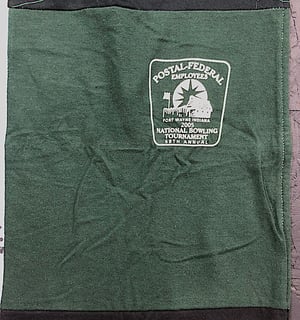
Another failed solution are quilts that include small graphics swimming in empty space. See the photo here. The small graphic is up in the upper right corner of the block. The rest of the bock is blank. A small block surrounded by too much blank area wastes space and looks silly. This is especially true if the graphic is in the upper right-hand corner of the block.
In the first photo here, the block is in a T-shirt blanket. That's why is looks like it could almost still be in the T-shirt. Note: In a T-shirt blanket, the T-shirts are just sewn to one another. They are not attached to the backing material except at the edge of the blanket. Read more about the difference between a T-shirt quilt and a T-shirt blanket here. They aren't the same!
 Putting a small graphic on a large block is not the solution. A small graphic needs to end up as a small block.
Putting a small graphic on a large block is not the solution. A small graphic needs to end up as a small block.
The second photo here, shows a much better solution to this situation. The block used is the correct size for the graphic. And the graphic is centered on the block. I think that this is how this block should be used.
The next photo here compares a traditional solution to a T-shirt quilt using just one block size with a puzzle style quilt.
Which one do you feel is the better solution to the exact same group of T-shirts?
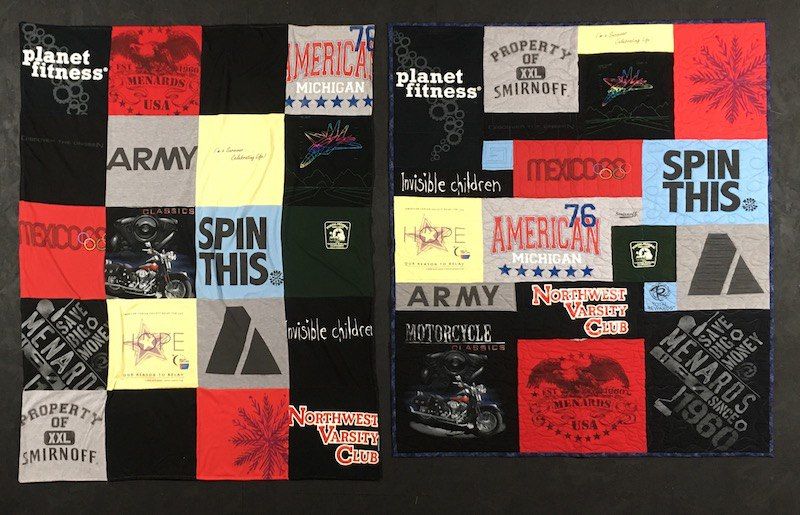
Planning a T-shirt quilt?
Here are step-by-step directions for ordering your Too Cool T-shirt quilt.
Problem 2 – A T-shirt Quilt Must Attract and Keep a Viewer’s Attention
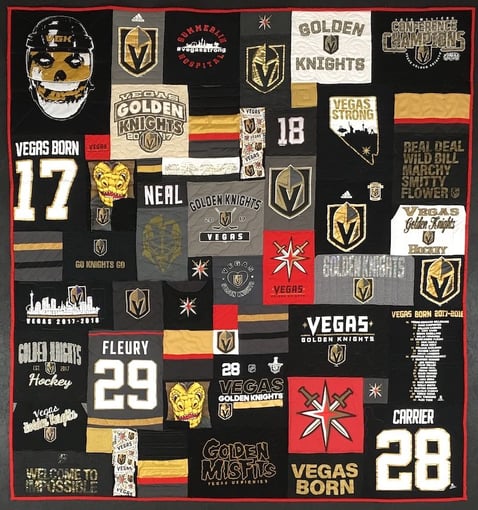 In order to do this, a T-shirt quilt solution has to be interesting and novel. The solution has to make your brain stop and figure out the pattern.
In order to do this, a T-shirt quilt solution has to be interesting and novel. The solution has to make your brain stop and figure out the pattern.
The human brain can discern patterns easily – that’s what we do best. Our brains are constantly surveying our surroundings looking for things out of the ordinary. As long as the pattern is familiar, our subconscious lets the rest of our mind know that it’s ok to be doing something else.
Let's relate this concept to a T-shirt quilt. A quilt with a very simple pattern is easy for us to figure out. We don’t have spend a lot of time looking at it. A traditional style T-shirt quilt is laid out in a grid. For example, it may be 4 blocks across by 5 blocks tall. This grid pattern is such an easy problem for our brains! We don’t pay much attention to it.
The best solution is a quilt design that's puzzled together. When we look at this design, we may begin to see a column or a row. But then a block of a different size interrupts the row. This makes us stop and consider what we are seeing. As your brain continues to look for the underlying pattern, you will stay actively involved in looking at the quilt. A puzzled together quilt is a great solution because you keep looking at the quilt.
Problem 3 – The Different Color T-shirt Blocks Need to Be Balanced Throughout the Quilt
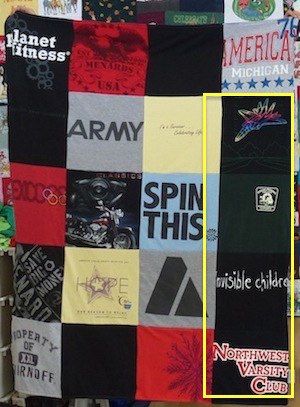 Any design solution, successful or not in other categories, can fail if the colors of the T-shirts are not balanced. For example, if all the red blocks in the quilt are congregated in one area of the quilt, the quilt will be unbalanced.
Any design solution, successful or not in other categories, can fail if the colors of the T-shirts are not balanced. For example, if all the red blocks in the quilt are congregated in one area of the quilt, the quilt will be unbalanced.
A quilt maker must be skilled enough to spread the various color T-shirt blocks evenly throughout the quilt. Spend time looking at photos of T-shirt quilts. Squint your eyes and look to see if any globs of colors stick out. If so, the quilt is not as successful as it could have been.
Many quilts made of uniform size blocks laid out in rows and columns will look unbalanced. You could lay them out in a dark/light checkerboard pattern, but if there are more darks than lights, this pattern can’t hold.
In the quilt here, there are 4 dark blocks stacked up on one side. This makes the quilt very unbalanced.
Note: This quilt also does not solve any of the 3 problems all T-shirt quilts must solve.
Conclusion
When you are looking at T-shirt quilts, look at how they solve for these problems. You should want your T-shirts made into a quilt that is awesome for anyone to look at. If they are your T-shirts, you will probably like any quilt they are made into.
The test of a great T-shirt quilt is if someone says, “If you don’t want it, I’ll take it!” This means that the quilt is about more than just the T-shirts it was made from.
Want to learn more about T-shirt quilts? Visit our Learning Center.
We have over 200 articles about all aspects of T-shirt quilts.
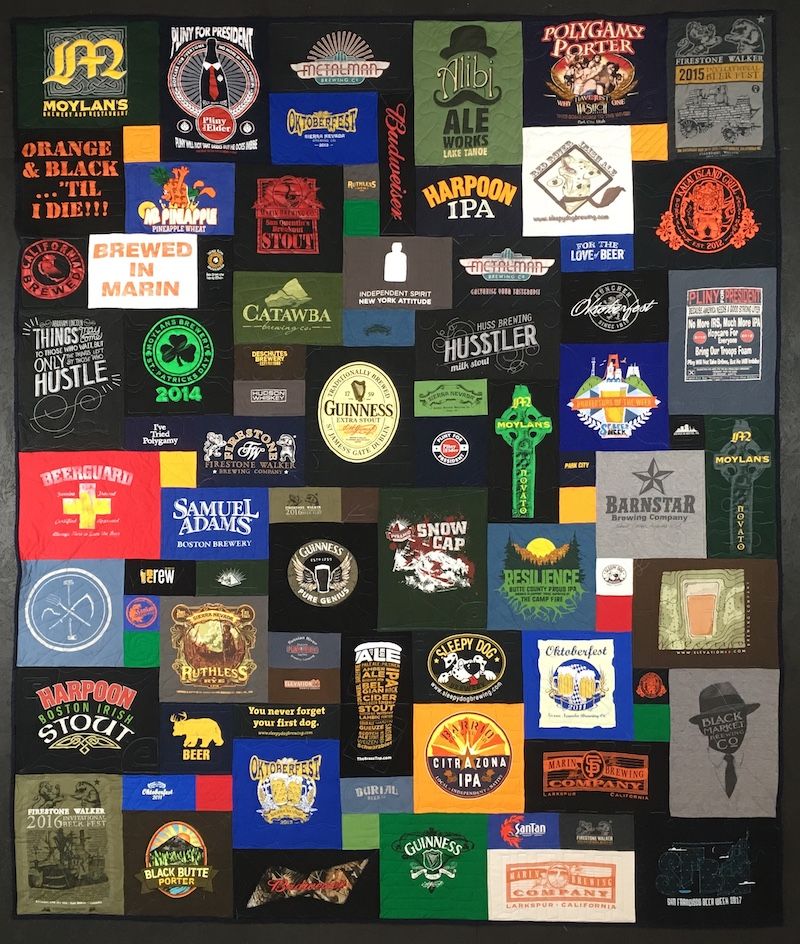
In 1992, Andrea Funk set out to reinvent the T-shirt quilt—and did. She pioneered the use of multi-size blocks and went on to develop six additional quilt styles, establishing Too Cool T-shirt Quilts as the creative engine behind the modern T-shirt quilt movement.


